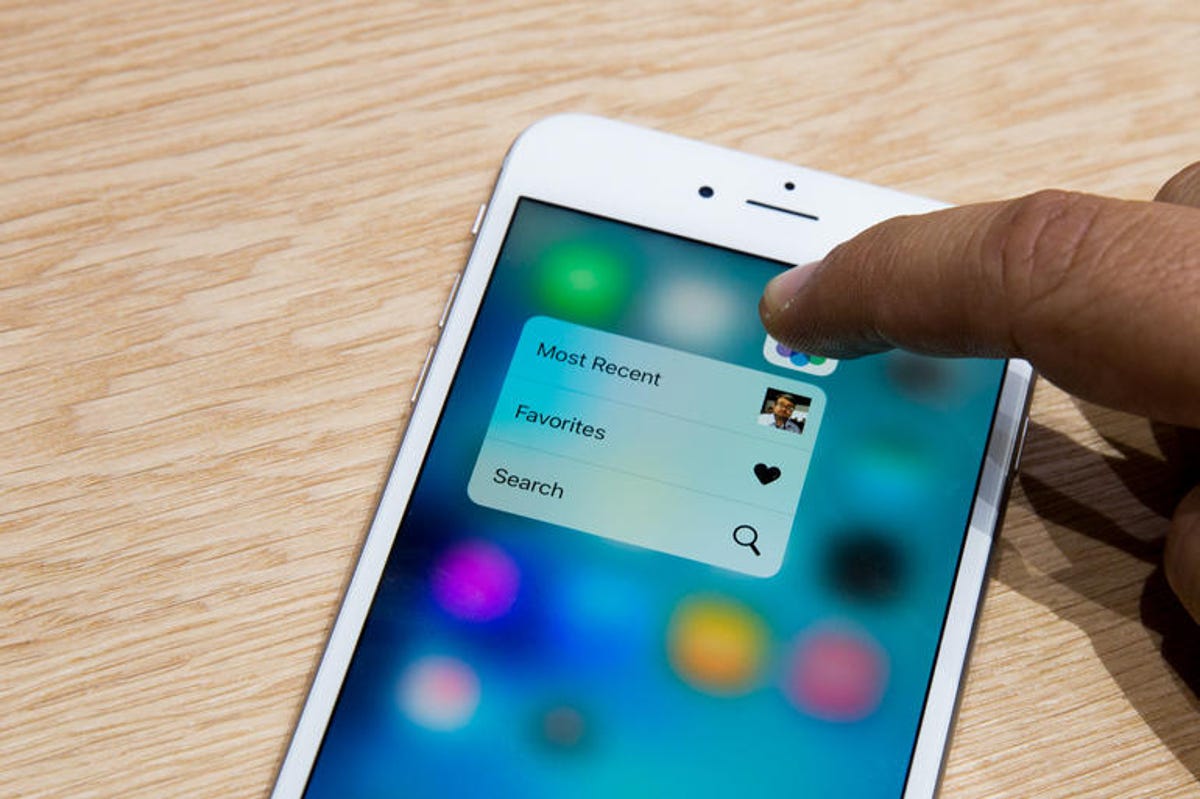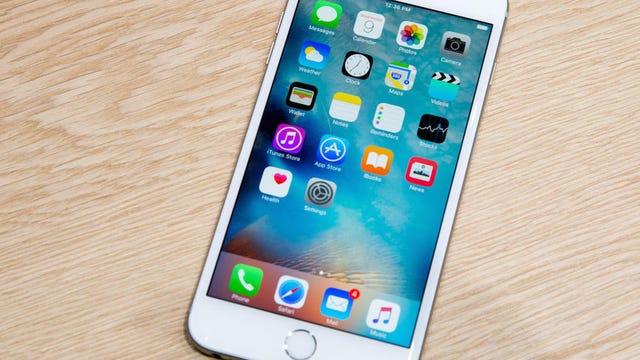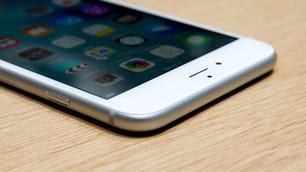Is the iconic home button on the iPhone about to become a thing of the past? The iPhone 6S is making waves with hints that it may be bidding farewell to the familiar feature that has been a cornerstone of Apple’s design for years. Since the groundbreaking debut of the iPhone by Steve Jobs in 2007, the single home button has been a key element setting Apple apart from its competitors. However, the latest model, the iPhone 6S, introduces innovative features like a pressure-sensitive touchscreen and enhanced voice-activated Siri capabilities that could pave the way for a significant design shift.
One of the driving forces behind potentially removing the home button is to maximize screen real estate without increasing the overall device size. This move aligns with Apple’s commitment to sleek and minimalist design aesthetics. While the removal of the home button may seem like a bold departure from tradition, Apple has a history of embracing bold changes to stay ahead in the dynamic tech industry.
You are watching: Hot-button issue: iPhone 6S hints at an end to the home button
Despite the speculation, Apple has not confirmed if the next iPhone iterations will completely eliminate the home button. The decision to do so would require careful consideration, including integrating the fingerprint sensor into the screen and accommodating a larger display. Nevertheless, such a shift would mark a notable transformation in one of the most iconic products in the smartphone market.When considering the new iPhone 6S, there are 15 essential aspects to understand. The latest iPhone iteration brings forth significant advancements and features that cater to various user needs. Let’s delve into the key highlights to grasp a comprehensive understanding of the iPhone 6S.
-
Design and Display: The iPhone 6S showcases a sleek design with a vibrant display that enhances the overall user experience.
-
Camera Quality: One of the standout features of the iPhone 6S is its impressive camera quality, allowing users to capture stunning photos and videos effortlessly.
-
Performance: With enhanced performance capabilities, the iPhone 6S ensures smooth operation and seamless multitasking.
-
Battery Life: The device offers improved battery life, enabling users to stay connected throughout the day without constant recharging.
-
Operating System: Running on the latest iOS, the iPhone 6S provides access to a wide range of apps and features to cater to diverse user preferences.
-
Security Features: Apple prioritizes user privacy and security, incorporating robust security features to safeguard personal data.
-
Innovative Technology: The iPhone 6S introduces innovative technologies that elevate the smartphone experience, such as 3D Touch for enhanced functionality.
-
Storage Options: Users can choose from various storage options based on their needs, ensuring ample space for apps, photos, and videos.
-
Connectivity: The iPhone 6S offers seamless connectivity options, allowing users to stay connected wherever they go.
-
See more : Hurricane Irene to challenge cell phone networks
Accessories and Add-Ons: Apple provides a range of accessories and add-ons to complement the iPhone 6S, enhancing its functionality and versatility.
-
Customer Support: Apple’s reliable customer support ensures that users receive assistance whenever needed, enhancing the overall ownership experience.
-
User-Friendly Interface: The iPhone 6S features a user-friendly interface that caters to both novice and experienced users, making it easy to navigate and utilize various features.
-
Customization Options: Users can personalize their iPhone 6S with various customization options, reflecting their unique style and preferences.
-
Eco-Friendly Initiatives: Apple focuses on eco-friendly practices, ensuring that the iPhone 6S is manufactured sustainably with minimal environmental impact.
-
Future Updates: Apple consistently provides software updates and enhancements for the iPhone 6S, ensuring continued performance optimization and feature additions.
In conclusion, the iPhone 6S encapsulates a blend of style, innovation, and functionality, catering to a diverse range of user preferences and requirements. Embracing the latest technological advancements, the iPhone 6S stands as a versatile and reliable companion for everyday use.
A Revolutionary User Interface Experience
Apple’s latest iPhone models showcase a subtle yet impactful evolution in design. The dimensions of the standard and Plus variants retain the familiar 4.7-inch and 5.5-inch displays, respectively, while maintaining their iconic form and weight. One of the key introductions in this year’s release is the incorporation of 3D Touch, a cutting-edge technology that offers a dynamic response based on the pressure applied to the screen.
Renowned analyst Avi Greengart, specializing in consumer technology at Current Analysis, expressed admiration for the innovation, highlighting its transformative impact on touchscreen interactions. The implementation of 3D Touch streamlines user actions that would otherwise involve multiple steps, enhancing the overall user experience.
Initially, the functionality of 3D Touch may appear almost magical: a display capable of detecting the level of pressure exerted and responding with subtle haptic feedback – the slight vibration that signifies the device’s acknowledgment. This technology, also featured in the Apple Watch as “Force Touch” and in the trackpads of the latest MacBook models, simulates the tactile sensation of pressing down.
Despite its innovative nature, 3D Touch seamlessly integrates into the user experience, aiming for a natural and intuitive feel. Whether on the smartwatch, laptop, or potentially on the iPhone as a means to enhance efficiency, the technology serves as a tool to simplify interactions and facilitate quick actions.
See more : Samsung expert witnesses: Sorry, Apple, there's no infringement
By leveraging this technology, the Apple Watch has successfully streamlined its interface by eliminating superfluous buttons, while the MacBook range has enhanced navigation through the replacement of physical click mechanisms with Force Touch. As this innovative feature finds its way to the iPhone lineup, it holds the promise of revolutionizing user interactions, potentially reimagining the conventional role of the home button.
Who needs a button when you have Siri?
Since its debut on the iPhone 4S in 2011, Siri, Apple’s virtual voice assistant, has sparked a wave of innovation in the realm of navigation technology. This pioneering move paved the way for competitors like Microsoft’s Cortana, Google Now, and Amazon’s Alexa to enter the scene. Apple has recently introduced an innovative feature known as always-on listening to keep pace with its rivals. This advancement allows iPhone users to effortlessly activate Siri by simply saying “Hey, Siri,” eliminating the need to press the home button. (This feature was initially available on earlier iPhone models but limited to when the device was charging.)
Besides enabling hands-free searches, Siri is continuously improving its capability to streamline tasks that typically require multiple taps, such as setting alarms or creating reminders. This hands-free functionality proves to be especially beneficial when multitasking, whether you are driving or cooking.
As technology evolves, so do user interaction patterns. Analyst Greengart notes, “Consumers may gradually become accustomed to seeking assistance from Siri.”
Playing with Screen Size
When considering the design of smartphones, the absence of a home button can significantly impact the screen size, offering users a more immersive viewing experience. Unlike older models with smaller screens, current iPhones boast larger displays. However, it’s worth noting that they are not only bigger than previous iterations but also surpass many of their competitors in terms of length and width. For instance, while Samsung’s Galaxy Note 5 sports a 5.7-inch screen, Apple’s Plus models feature a 5.5-inch display. Similarly, LG’s G4 also offers a 5.5-inch screen but stands out due to its sleek design, resulting in a more compact body.
| Current iPhones | Bigger screens compared to older models |
| Samsung’s Galaxy Note 5 | 5.7-inch display |
| Apple’s Plus models | 5.5-inch display |
| LG’s G4 | 5.5-inch display with a compact body |
By eliminating the home button, smartphone manufacturers can maximize the screen real estate, allowing for more content to be displayed and enhancing the overall user experience. This shift in design philosophy not only caters to the growing trend of larger screens but also emphasizes the importance of optimizing the device’s form factor for improved usability.
Understanding Apple’s Innovation: Exploring the iPhone 6S and 3D Touch
Are you curious about the iPhone 6S and its innovative features, including the impressive 3D Touch technology? Let’s explore how Apple’s design choices have influenced the smartphone landscape.
The iPhone 6S boasts a 4.7-inch display, offering a sleek and modern design. However, competitors like Google’s Nexus 5 have managed to incorporate a larger 5-inch screen within a similar chassis. This highlights the importance of efficient space utilization in smartphone design.
Looking ahead, a potential smaller iPhone 7 with a similar screen size could appeal to customers looking for a more compact device that fits comfortably in their pockets. This move could not only cater to consumer preferences but also strengthen Apple’s position in the market, amidst competition from industry players like Samsung, LG, Motorola, and Xiaomi.
### FAQs
-
What design changes did Apple make in the latest iPhone models?
Apple made subtle design changes in the newest iPhone, including the introduction of 3D Touch technology that enhances touchscreen interaction. -
Why is Apple considering removing the iconic home button from future iPhone models?
Apple is exploring the possibility of eliminating the physical home button to maximize screen real estate, potentially allowing for larger displays on more compact devices. -
What role does Siri play in the potential removal of the home button?
With the introduction of always-on listening functionality, Siri offers hands-free convenience for users, reducing the need for physical button interactions. -
How does 3D Touch technology differentiate the iPhone 6S from previous models?
3D Touch technology responds to varying levels of pressure on the screen, streamlining interactions that would typically require multiple steps. -
What design advantages could arise from ditching the home button?
Removing the home button may enable Apple to further streamline the iPhone’s design, potentially leading to devices with larger screens in more compact bodies. -
What impact could the potential removal of the home button have on Touch ID functionality?
Apple is exploring innovative solutions such as embedding the Touch ID sensor beneath the display to maintain security features without the need for a physical home button. -
How might the removal of the home button align with Apple’s design philosophy?
A buttonless iPhone would align with Apple’s minimalist design approach, emphasizing a clean and sleek aesthetic. -
What challenges does Apple face in implementing a buttonless design for future iPhones?
Technical challenges, user familiarity, and the versatility of the home button present considerations for Apple in transitioning to a buttonless design.
Summary
The evolution of the iPhone’s design, particularly the potential removal of the iconic home button, marks a significant shift in Apple’s approach to smartphone navigation. From the introduction of 3D Touch technology to the exploration of innovative solutions like integrating Touch ID beneath the display, Apple is poised to redefine user interactions with its devices. The emphasis on maximizing screen real estate, enhancing Siri functionality, and maintaining security features without compromising user experience underscores Apple’s commitment to innovation and user-centric design. As Apple continues to push boundaries and redefine industry standards, the future of iPhone design promises exciting possibilities for tech enthusiasts and consumers alike.
For the latest updates and insights on Apple’s design innovations, visit our website and stay informed about the cutting-edge developments shaping the future of smartphone technology.
Source: https://anytimesoftcare.com
Category: Laptop




